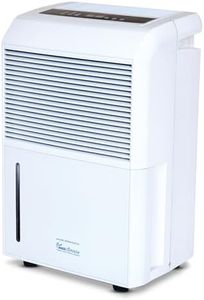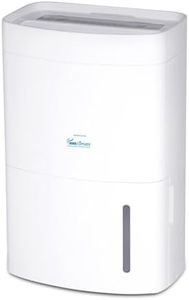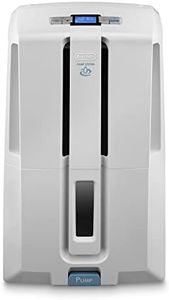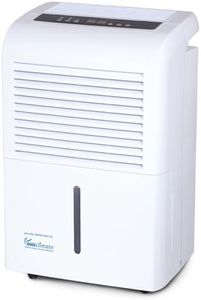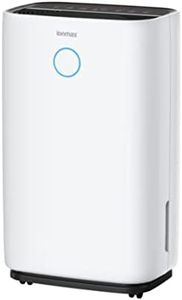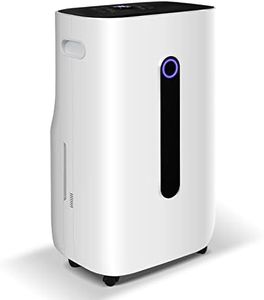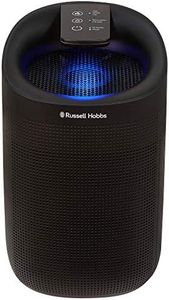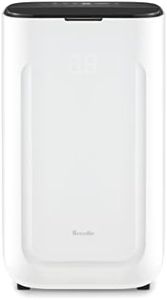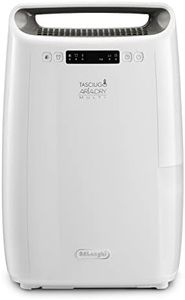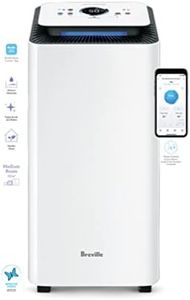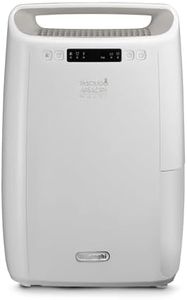We Use CookiesWe use cookies to enhance the security, performance,
functionality and for analytical and promotional activities. By continuing to browse this site you
are agreeing to our privacy policy
10 Best Whole House Dehumidifiers
From leading brands and best sellers available on the web.Buying Guide for the Best Whole House Dehumidifiers
Choosing a whole-house dehumidifier requires a bit of thought about your home's size, climate, and specific moisture issues. A whole-house dehumidifier is designed to keep humidity levels comfortable and healthy throughout your entire home, working alongside your home's HVAC system. To make the best choice, you should consider several key features and specifications that directly impact performance and suitability. Understanding these specs will help you match the dehumidifier to your unique needs, ensuring efficient operation and better air quality.Capacity (Pints per Day)Capacity refers to how much moisture the dehumidifier can remove from the air in a 24-hour period, usually measured in pints per day. This spec is vital because the size and humidity level of your home determine how powerful the dehumidifier needs to be. Small homes or areas with mild humidity might need lower capacity, typically around 70-90 pints, while larger homes or very humid climates may require units with capacities over 120 pints per day. When choosing, base your decision on the square footage of your home and the severity of your moisture issues—that way, you ensure you pick a unit that isn’t underpowered or wasting energy.
Airflow (CFM - Cubic Feet per Minute)Airflow measures how much air the unit can move through per minute, in cubic feet. The higher the CFM, the faster your dehumidifier can circulate air and remove moisture. Homes with spread-out floor plans or where air needs to travel far benefit from higher CFM ratings, while smaller or more compact spaces may need less. Assess your home’s layout and size; if air circulation is a challenge, opt for higher airflow to ensure even dehumidification.
Drainage OptionsDrainage options indicate how the dehumidifier gets rid of the collected water. Some units use gravity drains, others come with built-in pumps, and some offer manual reservoirs. If your installation allows for easy gravity draining (like near a floor drain), that might be simplest. Built-in pumps are good for moving water up or over longer distances, especially if you don’t have a nearby drain. Manual reservoirs will need frequent emptying, making them less practical for whole-house models. Consider your home’s plumbing and where you can access drainage to decide what’s most convenient for your setup.
Control and IntegrationThis spec addresses how you manage the dehumidifier, such as whether it has built-in humidistats, digital controls, or can integrate with your home’s HVAC system or smart home setup. A built-in humidistat lets you set specific humidity levels for automatic adjustment, which keeps comfort high and energy use in check. Integration with HVAC systems or smart controls allows more seamless operation throughout the house. If you want simple, efficient humidity control, look for systems with precise, automatic controls and consider integration if you already use a smart thermostat or similar home automation.
Filter Type and MaintenanceWhole-house dehumidifiers often include filters to help purify the air as they remove humidity. The filter type (washable, replaceable, HEPA, etc.) and how often it needs maintenance are important because they affect how much effort and cost is involved in keeping the unit working efficiently and maintaining air quality. If you’re sensitive to dust or allergens, a more advanced or HEPA filter might be worth it, but remember you’ll need to clean or change filters regularly. Think about your preferences for maintenance and air quality before picking a filter type.
Noise LevelNoise level tells you how loud the dehumidifier will be while in operation, usually measured in decibels (dB). Some units operate more quietly, which can be important if your dehumidifier is located near living spaces or bedrooms. If you’re sensitive to noise or the unit will be near common areas, look for options with lower decibel ratings to maintain a peaceful home environment.
Energy EfficiencyEnergy efficiency describes how much energy the dehumidifier uses relative to its performance, often indicated by an Energy Star rating or similar certification. This spec is important for keeping utility bills in check and minimizing environmental impact. Higher efficiency models use less energy to remove the same amount of moisture, so if you’ll be running the dehumidifier regularly or for long periods, an efficient model can make a noticeable difference over time.
